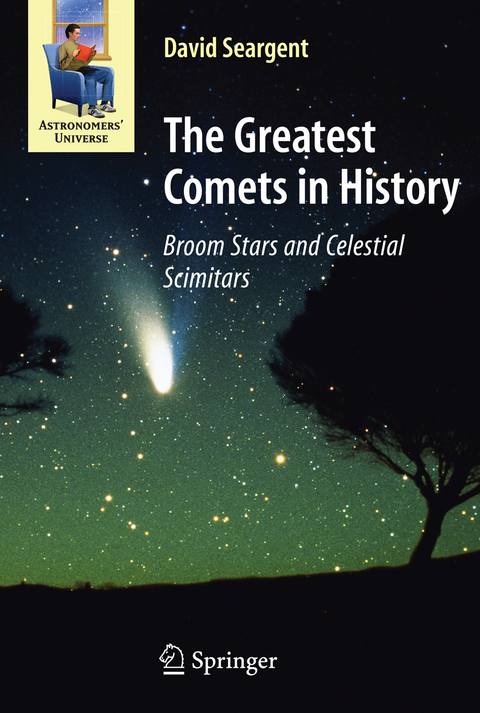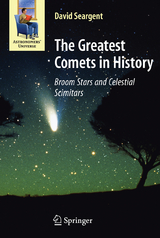The Greatest Comets in History
Springer-Verlag New York Inc.
978-0-387-09512-7 (ISBN)
Naked-eye comets are far from uncommon. As a rough average, one appears every 18 months or thereabouts, and it is not very unusual to see more than two in a single year. The record so far seems to have been 2004, with a total of five comets visible without optical aid. But 2006, 1970, and 1911 were not far behind with a total of four apiece. Yet, the majority of these pass unnoticed by the general public. Most simply look like fuzzy stars with tails that are either faint or below the naked-eye threshold. The ‘classical’ comet – a bright star-like object with a long flowing tail – is a sight that graces our skies about once per decade, on average. These ‘great comets’ are surely among the most beautiful objects that we can see in the heavens, and it is no wonder that they created such fear in earlier times. Just what makes a comet ‘‘great’’ is not easy to define. It is neither just about brightness nor only a matter of size. Some comets can sport prodigiously long tails and yet not be regarded as great. Others can become very bright, but hardly anyone other than a handful of enthusiastic astronomers will ever see them. Much depends on their separation from the Sun, the intensity of the tail, and so forth.
David Seargent is a former lecturer in Philosophy with the Department of Community Programs at the University of Newcastle in Australia and is now a full-time writer. He is the author of the very popular Comets: Vagabonds of Space (Doubleday), formerly a contributing editor on comets to Sky & Space magazine, and currently author of the regular comet column for Australian Sky & Telescope (the southern hemisphere edition). He was co-author with Joseph Marcus, of a paper published in 1986 entitled "Dust forward scatter brightness enhancement in previous apparitions of Halley’s comet" (Proceedings, 20th. ESLAB Symposium on the Exploration of Halley’s Comet, Vol. 3, B. Battrick, E. J. Rolfe and R. Reinhard, eds. ESA SP-250. European Space Agency Publications). He was also the Australian co-ordinator for visual observations during the International Halley Watch, 1985-6.
The Nature of Comets.- Halley#x2019;s Comet Through the Ages.- The Greatest Comets of Ancient Times.- The Greatest Comets from A.D. 1000 to 1800.- The Greatest Comets from 1800 to Present Times.- Kamikaze Comets: The Kreutz Sungrazers.- Daylight Comets.
| Reihe/Serie | Astronomers' Universe |
|---|---|
| Zusatzinfo | 8 Illustrations, color; 39 Illustrations, black and white; XX, 260 p. 47 illus., 8 illus. in color. |
| Verlagsort | New York, NY |
| Sprache | englisch |
| Maße | 155 x 235 mm |
| Themenwelt | Sachbuch/Ratgeber ► Natur / Technik ► Weltraum / Astronomie |
| Naturwissenschaften ► Physik / Astronomie ► Astronomie / Astrophysik | |
| ISBN-10 | 0-387-09512-8 / 0387095128 |
| ISBN-13 | 978-0-387-09512-7 / 9780387095127 |
| Zustand | Neuware |
| Haben Sie eine Frage zum Produkt? |
aus dem Bereich




